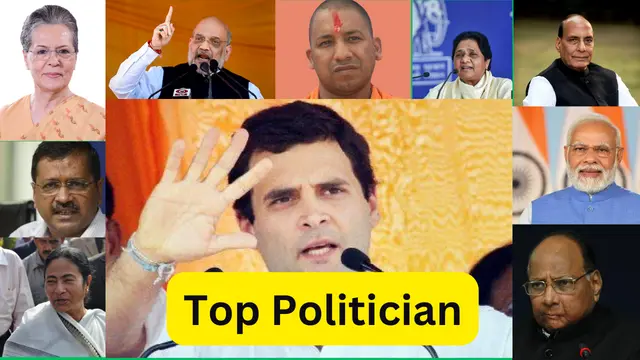
However, I can mention some prominent Indian politicians up until that time. Please note that the political landscape can change, and new leaders may have emerged since my last update.
- Narendra Modi: Prime Minister of India and leader of the Bharatiya Janata Party (BJP).
- Rahul Gandhi: Leader of the Indian National Congress party and a prominent opposition leader.
- Amit Shah: Home Minister of India and a senior leader of the BJP.
- Sonia Gandhi: Former President of the Indian National Congress party.
- Arvind Kejriwal: Chief Minister of Delhi and leader of the Aam Aadmi Party
- Mamata Banerjee: Chief Minister of West Bengal and leader of the All India Trinamool Congress party.
- Rajnath Singh: Defense Minister of India and a senior leader of the BJP.
- Mayawati: Leader of Bahujan Samaj Party, former Chief Minister of Uttar Pradesh.
- Sharad Pawar: Leader of the Nationalist Congress Party, former Chief Minister of Maharashtra.
- Yogi Adityanath: Chief Minister of Uttar Pradesh and a prominent BJP leader.
Table of Contents
Some of the Iconic Politicians
1. Narendra Modi

Narendra Modi is an Indian politician who has been serving as the Prime Minister of India since May 2014. He is a member of the Bharatiya Janata Party (BJP) and the Rashtriya Swayamsevak Sangh (RSS), a Hindu nationalist paramilitary volunteer organization. Top 10 Politicians in India. Here is a brief biography of Narendra Modi up until my last update
Early Life
Narendra Modi was born on September 17, 1950, in Vadnagar, a small town in Gujarat, India. He belonged to a lower-middle-class family. Modi’s early life was marked by his association with the Rashtriya Swayamsevak Sangh (RSS), a right-wing Hindu nationalist organization.
Political Career
Modi’s political career began in the Rashtriya Swayamsevak Sangh, and he later joined the Bharatiya Janata Party (BJP). He held several positions within the party and worked in various states to strengthen the party’s organizational structure.
Chief Minister of Gujarat
Narendra Modi served as the Chief Minister of the Indian state of Gujarat from 2001 to 2014. His tenure as Chief Minister was marked by both praise and controversy. Under his leadership, Gujarat experienced significant economic growth, but his tenure was also marred by the 2002 Gujarat riots, a period of inter-communal violence in the state.
Prime Ministership
In 2014, Narendra Modi led the BJP to a decisive victory in the Indian general elections. He was sworn in as the 14th Prime Minister of India on May 26, 2014. Modi’s government focused on various initiatives and reforms, including the implementation of the Goods and Services Tax (GST) and the demonetization of high-denomination currency notes.
Reelection in 2019
Modi was reelected as the Prime Minister of India in May 2019 after the BJP won a majority in the general elections. His second term in office continued to focus on economic reforms, infrastructure development, and social welfare programs.
International Relations
Modi’s tenure as Prime Minister saw a significant emphasis on India’s foreign policy, including efforts to strengthen ties with various countries, especially in Asia and the Middle East. He also played a crucial role in global climate change initiatives.
2. Rahul Gandhi
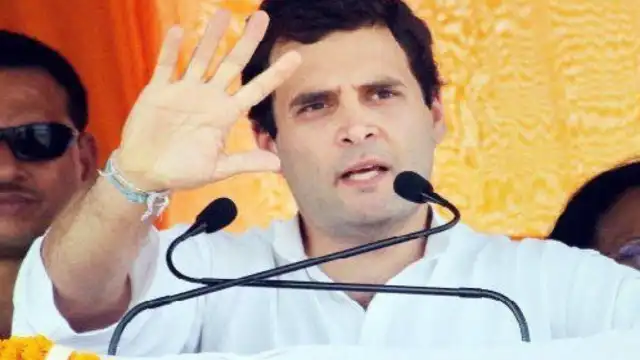
Rahul Gandhi is an Indian politician and a member of the Indian National Congress (INC) party, one of the major political parties in India. He hails from the Nehru-Gandhi family, a prominent political dynasty in India. Here is a brief biography of Rahul Gandhi up until my last update
Early Life
Rahul Gandhi was born on June 19, 1970, in New Delhi, India. He is the son of Rajiv Gandhi, a former Prime Minister of India, and Sonia Gandhi, the former President of the Indian National Congress. He is the grandson of Indira Gandhi, another former Prime Minister of India, and the great-grandson of Jawaharlal Nehru, the first Prime Minister of India. Growing up in this political family, Top 10 Politicians in India. Rahul Gandhi was exposed to politics from an early age.
Education
Rahul Gandhi attended Rollins College in Florida, USA, and later Cambridge University in the United Kingdom, where he completed an M.Phil. in Development Studies. He also worked at management consulting firms in London and later in Mumbai before entering politics.
Political Career
Rahul Gandhi entered active politics in 2004 and was elected as a Member of Parliament. He has represented the constituency of Wayanad in Kerala and previously represented the constituency of Amethi in Uttar Pradesh. Over the years, he held various positions within the Indian National Congress party.
Leadership Roles
Rahul Gandhi served as the Vice President of the Indian National Congress party from 2013 to 2017 and later as its President from December 2017 to August 2019. During his tenure as President, the party faced both electoral successes and challenges.
Political Ideals
Rahul Gandhi has often emphasized the need for internal democracy within the party and has advocated for empowering grassroots workers. He has also been vocal about issues related to farmers, social justice, and economic development.
3. Amit Shah
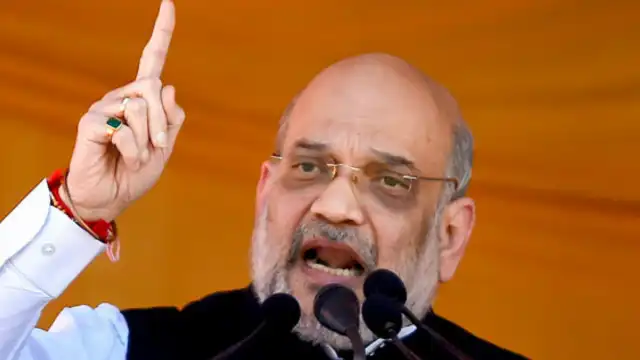
Amit Shah is an Indian politician and a prominent member of the Bharatiya Janata Party (BJP), which is one of the major political parties in India. Top 10 Politicians in India. Here is a brief biography of Amit Shah up until my last update
Early Life and Education
Amit Shah was born on October 22, 1964, in Mumbai, India. He studied biochemistry at CU Shah Science College in Ahmedabad, Gujarat, and later worked in his family’s PVC pipe business.
Political Career
Amit Shah’s political career began in the early 1980s when he joined the Rashtriya Swayamsevak Sangh (RSS), a Hindu nationalist organization. He later became an active member of the BJP. Shah gained prominence as a skilled political strategist and organizer during his tenure as a member of the Akhil Bharatiya Vidyarthi Parishad (ABVP), the student wing of the RSS. Over the years, he held several key positions within the BJP.
Gujarat Politics
Shah’s political career in Gujarat gained momentum when he became the Minister of State for Home Affairs in the government of Gujarat in 2002. He was later appointed as the Minister of State for Home Affairs under then Chief Minister Narendra Modi. During his tenure, Gujarat experienced significant law and order improvements.
BJP National Leadership
Amit Shah rose through the ranks of the BJP and played a crucial role in various state and national elections. He served as the BJP’s national president from July 2014 to January 2016, during which the party achieved significant electoral successes, including the 2014 Indian general elections where the BJP won a majority.
Home Minister of India
After the BJP’s victory in the 2019 general elections, Amit Shah was appointed as the Minister of Home Affairs in Prime Minister Narendra Modi’s cabinet. As the Home Minister, he oversees the country’s internal security and domestic policies.
4. Sonia Gandhi
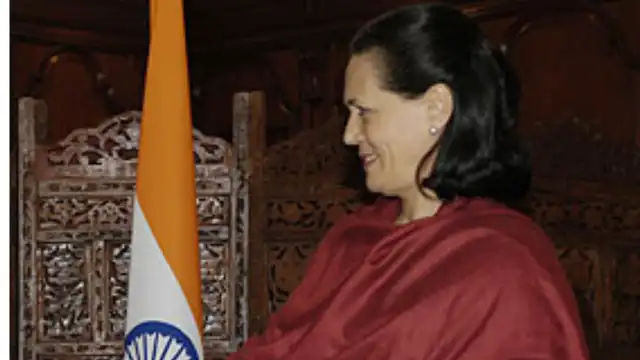
Sonia Gandhi, whose birth name is Antonia Edvige Albina Maino, is an Italian-born Indian politician and the widow of the former Prime Minister of India, Rajiv Gandhi. She is the former President of the Indian National Congress (INC), one of the major political parties in India. Top 10 Politicians in India. Here is a brief biography of Sonia Gandhi up until my last update.
Early Life
Sonia Gandhi was born on December 9, 1946, in Lusiana, a small village near Vicenza in Italy. She met Rajiv Gandhi, the son of then-Prime Minister Indira Gandhi while studying in Cambridge, England. They got married in 1968.
Entry into Indian Politics
Sonia Gandhi’s entry into Indian politics was reluctant and came after the assassination of her husband, Rajiv Gandhi, in 1991. She was initially hesitant to join politics but eventually became the President of the Indian National Congress in 1998.
Leadership of the Indian National Congress
Under Sonia Gandhi’s leadership, the INC achieved significant political victories, including forming a coalition government at the centre. However, she faced criticism due to her Italian origin, though she later became a respected and influential figure in Indian politics.
Declining Prime Ministership
After the 2004 general elections, the INC emerged as the single largest party in the Lok Sabha (lower house of Parliament). Sonia Gandhi was poised to become the Prime Minister of India but declined the position, citing concerns about her foreign origin. Instead, she nominated Manmohan Singh, an economist and senior party leader, as the Prime Minister.
Role in UPA Government
During the United Progressive Alliance (UPA) government’s tenure (2004-2014), Sonia Gandhi played a key role in shaping policies and strategies. The UPA government implemented several social welfare programs, including the National Rural Employment Guarantee Act (NREGA) and the Right to Information Act (RTI), under her influence.
Personal Life
Sonia Gandhi is the mother of Rahul Gandhi and Priyanka Gandhi Vadra, both of whom are prominent politicians. She has also been a trustee of the Rajiv Gandhi Foundation, a charitable organization named after her husband.
5. Arvind Kejriwal
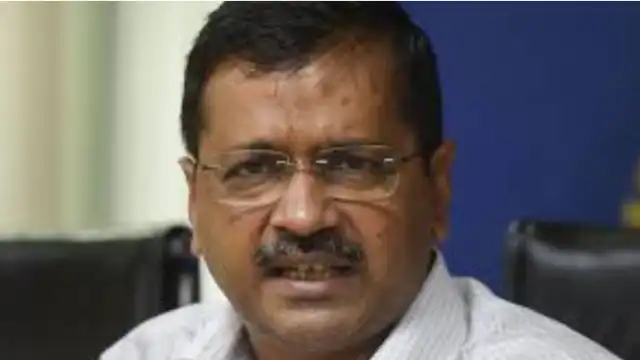
Arvind Kejriwal is an Indian politician and the current Chief Minister of Delhi, a position he has held since February 2015. He is the founder and leader of the Aam Aadmi Party (AAP), a political party in India. Top 10 Politicians in India. Here is a brief biography of Arvind Kejriwal up until my last update
Early Life and Education
Arvind Kejriwal was born on August 16, 1968, in Siwani, Haryana, India. He graduated from the Indian Institute of Technology (IIT) Kharagpur with a degree in mechanical engineering. Later, he joined the Indian Revenue Service (IRS) and worked as a civil servant in the Income Tax Department.
Activism and Anna Hazare’s Movement
Kejriwal was involved in various social and anti-corruption movements before entering politics. He gained significant attention for his role in the India Against Corruption movement led by social activist Anna Hazare in 2011. This movement aimed to demand the enactment of the Jan Lokpal Bill, a proposed anti-corruption law.
Formation of Aam Aadmi Party (AAP)
In November 2012, Kejriwal founded the Aam Aadmi Party, a political party that emerged from the anti-corruption movement. The party’s primary agenda is to fight against corruption in Indian politics and bring about transparency and accountability in governance.
Chief Minister of Delhi
In December 2013, the AAP contested the Delhi Legislative Assembly elections and won 28 out of 70 seats. Kejriwal became the Chief Minister of Delhi but resigned after 49 days due to the party’s inability to pass the Jan Lokpal Bill in the assembly.
In the subsequent elections held in February 2015, AAP won a historic mandate, securing 67 out of 70 seats in the Delhi Legislative Assembly. Kejriwal was sworn in as the Chief Minister of Delhi for the second time.
Reelection and Governance
In the 2020 Delhi Legislative Assembly elections, AAP secured a significant victory once again, winning 62 out of 70 seats. Under Kejriwal’s leadership, the Delhi government introduced several initiatives focusing on education, healthcare, and public services, including the transformation of government schools and the Mohalla Clinics project, providing affordable healthcare services to the public.
6. Mamata Banerjee
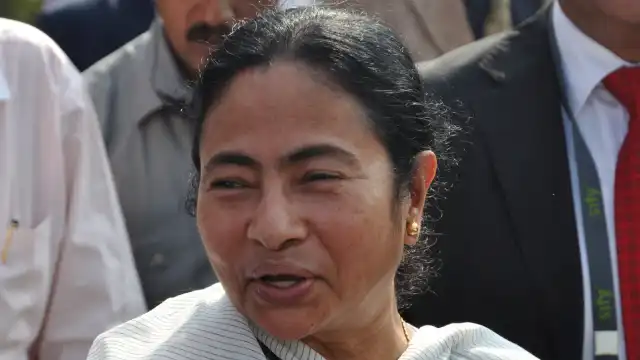
Mamata Banerjee is an Indian politician and the current Chief Minister of West Bengal. She is the founder and leader of the All India Trinamool Congress (AITC), a regional political party in West Bengal, India. Top 10 Politicians in India. Here is a brief biography of Mamata Banerjee up until my last update
Early Life and Political Beginnings
Mamata Banerjee was born on January 5, 1955, in Kolkata, West Bengal, India. She began her political career in the 1970s as a youth Congress leader and later became a member of the Indian National Congress (INC). She served in various positions within the INC and was also a member of the Rajya Sabha, the upper house of the Indian Parliament.
Formation of Trinamool Congress
In 1997, Mamata Banerjee founded the All India Trinamool Congress (AITC) after splitting from the INC. The party aimed to challenge the dominance of the Communist Party of India (Marxist) in West Bengal politics.
Chief Minister of West Bengal
Under Mamata Banerjee’s leadership, the Trinamool Congress achieved significant success in the 2011 West Bengal Legislative Assembly elections. The party won a majority of seats, and Mamata Banerjee became the Chief Minister of West Bengal, ending the 34-year rule of the Communist Party of India (Marxist) in the state.
Reelection and Political Achievements:
Mamata Banerjee’s popularity in West Bengal led to her reelection as Chief Minister in subsequent elections, including the 2016 elections. The Trinamool Congress secured a remarkable victory in the 2021 West Bengal Assembly elections, retaining power in the state.
During her tenure as Chief Minister, Banerjee implemented various social welfare programs, infrastructure projects, and initiatives to promote economic development in West Bengal. She has also been vocal on national issues and has played a significant role in opposition politics at the national level.
Personal Life
Mamata Banerjee is known for her simple lifestyle and austere habits. She is a poet and a painter and has published several books.
7. Rajnath Singh
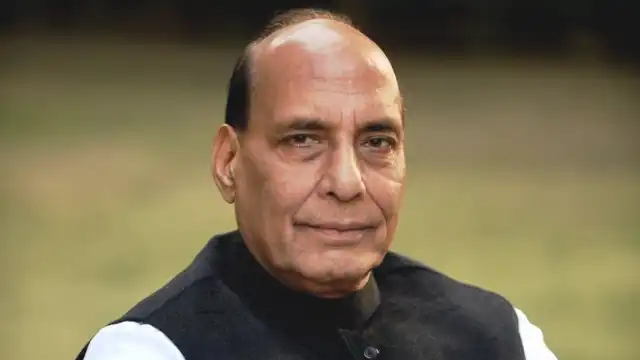
Rajnath Singh is an Indian politician associated with the Bharatiya Janata Party (BJP). He has held several significant positions in the Indian government and is known for his contributions to Indian politics. Top 10 Politicians in India. Here’s a brief biography of Rajnath Singh up until my last update
Early Life and Education
Rajnath Singh was born on July 10, 1951, in the small village of Bhabhaura in the Chandauli district of Uttar Pradesh, India. He completed his master’s degree in Physics from Gorakhpur University and later worked as a lecturer in Physics at K.B. Post Graduate College in Mirzapur.
Entry into Politics
Rajnath Singh’s political career started during his student days. He became associated with the Rashtriya Swayamsevak Sangh (RSS) and subsequently joined the Janata Party during the Emergency era in the 1970s. He later became a member of the Bharatiya Janata Party (BJP).
Chief Minister of Uttar Pradesh
Rajnath Singh served as the Chief Minister of Uttar Pradesh from 2000 to 2002 and again from 2002 to 2003. During his tenure, he implemented various initiatives focused on development and governance in the state.
Union Minister
Rajnath Singh has held several key positions at the national level. He served as the Minister of Agriculture from 2003 to 2004 in Atal Bihari Vajpayee’s government. He was also the Minister of Home Affairs in Prime Minister Narendra Modi’s cabinet from 2014 to 2019.
Minister of Defence
Rajnath Singh has been the Minister of Defence in the Government of India since May 2019. In this role, he oversees the country’s defence policies and military affairs.
Contributions to BJP
Rajnath Singh has played a crucial role in the BJP’s organizational growth. He served as the BJP President from 2005 to 2009 and again from 2013 to 2014. Under his leadership, the BJP made significant electoral gains.
8. Mayawati
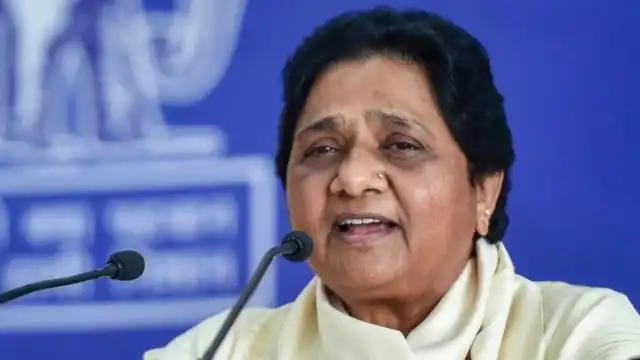
Mayawati, whose full name is Kumari Mayawati, is an Indian politician and the leader of the Bahujan Samaj Party (BSP), a prominent political party in India. She has served as the Chief Minister of Uttar Pradesh, India’s most populous state, multiple times. Here is a brief biography of Mayawati up until my last update
Early Life and Education
Mayawati was born on January 15, 1956, in Delhi, India. She hails from a Dalit family, which is considered one of the historically marginalized communities in India. Mayawati earned a Bachelor’s degree in Arts and later completed her Bachelor of Laws (LLB) from the University of Delhi.
Entry into Politics
Mayawati’s entry into politics was influenced by her association with the Bahujan Samaj Party (BSP), a party founded by Kanshi Ram, a prominent Dalit leader. She quickly rose through the ranks due to her dedication and leadership qualities.
Chief Minister of Uttar Pradesh
Mayawati has served as the Chief Minister of Uttar Pradesh multiple times. She first assumed office in 1995, making history as the first woman Dalit Chief Minister of any Indian state. She held subsequent terms as Chief Minister in 1997, 2002, and 2007. During her tenure, she focused on social and economic upliftment programs targeting the Dalit community.
Social Welfare Policies
Mayawati is known for her focus on social justice and welfare policies, particularly those aimed at improving the lives of Dalits and other marginalized communities in Uttar Pradesh. Her government initiated various development projects and worked to uplift the socio-economic status of the Dalits.
Political Alliances
Mayawati has entered into political alliances with other parties, such as the Bharatiya Janata Party (BJP) and the Samajwadi Party (SP), at different points in her political career, leading to shifts in political dynamics in Uttar Pradesh.
Criticism and Controversies
Mayawati’s tenure as Chief Minister was marked by both praise for her social welfare policies and criticism for alleged corruption and misuse of public funds. Her opulent lifestyle, particularly her collection of statues and memorials built in her honour, has been a subject of controversy.
9. Sharad Pawar
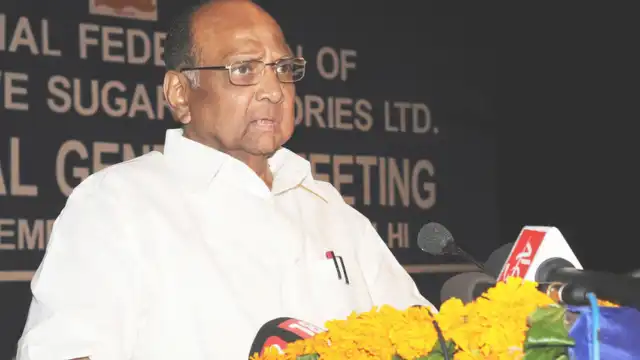
Sharad Pawar is a prominent Indian politician who has had a significant influence on Maharashtra state politics. He is the founder and leader of the Nationalist Congress Party (NCP), a political party in India. Here is a brief biography of Sharad Pawar up until my last update in September 2021:
Early Life and Education
Sharad Pawar was born on December 12, 1940, in Baramati, Maharashtra, India. He hails from a well-known political family in Maharashtra. He completed his education at Brihan Maharashtra College of Commerce in Pune and later obtained a law degree from the Government Law College, Mumbai.
Political Career
Pawar’s political journey began in his student days when he joined the Youth Congress. He quickly rose through the ranks of the Indian National Congress (INC) and became one of the key leaders of the party in Maharashtra.
Chief Minister of Maharashtra
Pawar served as the Chief Minister of Maharashtra multiple times. He held this position in the years 1978, 1988, 1991, and 1993, making him one of the longest-serving Chief Ministers of the state. His tenure as Chief Minister was marked by various developmental initiatives and efforts to improve agricultural practices in the state.
Ministerial Roles at the National Level
Pawar has also served in various ministerial roles at the national level. He held positions such as the Minister of Defence, Minister of Agriculture, and Minister of Food and Civil Supplies in the Government of India.
Founder of the Nationalist Congress Party (NCP)
In 1999, Sharad Pawar, along with several other leaders, split from the Indian National Congress and founded the Nationalist Congress Party (NCP). The party primarily operates in the state of Maharashtra but has also expanded its presence in other parts of India.
Cricket Administration
Apart from politics, Pawar is also a notable figure in the Indian cricket administration. He served as the President of the Board of Control for Cricket in India (BCCI) and played a significant role in the development of cricket in India.
10. Yogi Adityanath
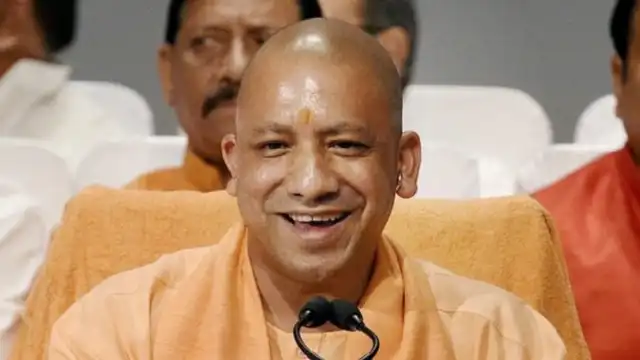
Yogi Adityanath, whose real name is Ajay Singh Bisht, is an Indian politician and a prominent member of the Bharatiya Janata Party (BJP). He is the Chief Minister of the state of Uttar Pradesh, India’s most populous state. Here is a brief biography of Yogi Adityanath up until my last update in September 2021:
Early Life and Education
Yogi Adityanath was born on June 5, 1972, in the district of Pauri Garhwal in Uttarakhand, India. He was introduced to the Nath sect of Hinduism at an early age, becoming a disciple of Mahant Avaidyanath, the head priest of the Gorakhnath Math, a prominent Hindu temple in Gorakhpur, Uttar Pradesh. He later became the head priest of the Gorakhnath Math.
Political Career
Yogi Adityanath’s political career began when he was elected as a Member of Parliament from Gorakhpur in 1998. He has been re-elected multiple times and served as the MP for Gorakhpur until 2017 when he became the Chief Minister of Uttar Pradesh. Adityanath is known for his strong Hindutva ideology and has been involved in various social and political activities aligned with this ideology.
Chief Minister of Uttar Pradesh
Yogi Adityanath was appointed as the Chief Minister of Uttar Pradesh in March 2017 following the BJP’s victory in the state assembly elections. His administration has focused on law and order, infrastructure development, and promoting religious and cultural events in the state.
Controversies
Yogi Adityanath has been a controversial figure due to his provocative statements and staunch positions on religious and social issues. His remarks on various topics have sparked debates and controversies, both nationally and internationally.